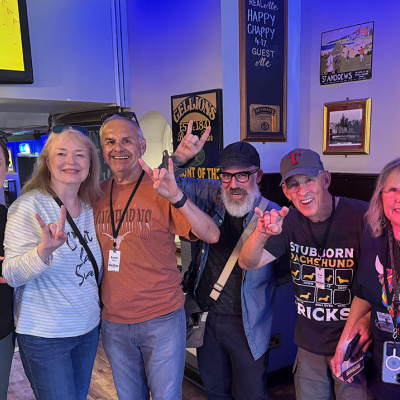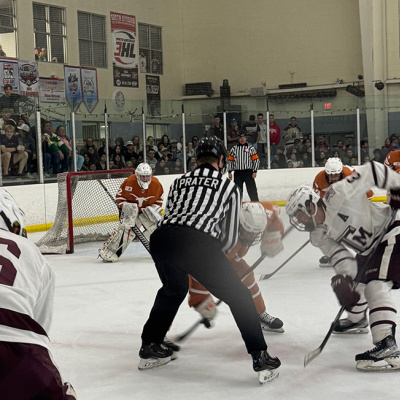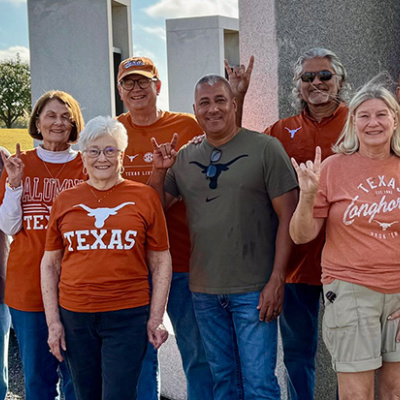Horns on Ice

UT has a hockey team?” is a fair question, and it is the one that assistant coach Dave McShane most often gets asked.
Junior forward Alec Helman says people often ask him where the team practices. After all, for a team to play hockey, it needs ice, and there isn’t much of that near campus.
Twice a week, about 20 players head to Chaparral Ice in Pflugerville for 10 p.m. practice. On a good week the team will have two practices totaling three hours. In Texas, ice isn’t cheap—an hour runs $300. The team’s budget is north of $75,000, of which the University covers about $12,000.
“I’d like to have more time to practice,” head coach Bob Smith says. “I’d like to have a facility. But the reality is we don’t.”
Smith started the team in 2000 because he thought: “Texas is good at everything else. Why not hockey? Why not Texas? Why not now?” UT hockey is a club team that competes in the American Collegiate Hockey Association at the Division II level.
“It’s technically club, but in reality it’s much higher level,” says sophomore forward Kevin Kenyon. Only 58 universities play NCAA hockey.
While many collegiate athletics programs have come under scrutiny for players being paid to play, the UT hockey members actually pay to play, in the neighborhood of $2,000 per year.
Other schools, such as Oklahoma and Texas A&M, subsidize costs for their players to play. It might not be a traditional scholarship, but their players are playing competitive hockey for free.
“These kids are so devoted that they’re willing to go and pay to get their brains beaten out,” Smith says. “It’s crazy.”
This devotion develops over many years of playing hockey. “I can’t really give it up,” junior goaltender Landon Cain says. “It’s the only sport I love, and it helps me sync everything else.”
Each season begins with what Smith describes as a Forrest Gump moment. “You know when he says, ‘Life is like a box of chocolates—you never know what you’re going to get until you open it up’?” he asks “That’s exactly how we feel at the beginning of each season.”
It’s not just about who shows up, but how their skills will fit in with the existing team’s. There are four weeks—eight practices—for the coaching staff to figure it out.
Competing in a relatively iceless, completely scholarship-less environment is tough because, Smith says, there aren’t teams to play near Austin. It’s paradoxical because Texas has more professional hockey teams than any other state—Hidalgo, Texas, even has a team—and yet aside from Texas A&M, the next closest legitimate competition is six hours away in Oklahoma. To stay competitive, the team cannot afford to play cupcake schools all year.
So the team travels. This year, stops include Boston, St. Louis, and Tucson. Smith doesn’t mind the long trips and actually makes sure to schedule at least two longer excursions each year—for the sake of education, but also in hopes that the teams they play will reciprocate.
“We have to go play and play well in hopes that they’ll pay to come back and play us,” Smith says.
For a school that is used to being the envy of others, the players say there is a lot to envy about other programs, such as Texas A&M, that regularly sell out games. “If we could put 500 people in the seats at $5 a seat, the program could fund itself,” Smith says.
For those that come to the games, sophomore forward Joseph Halford says they will not leave disappointed. “People who watch hockey want to see big hits and goals,” he says, “and we provide it.”





